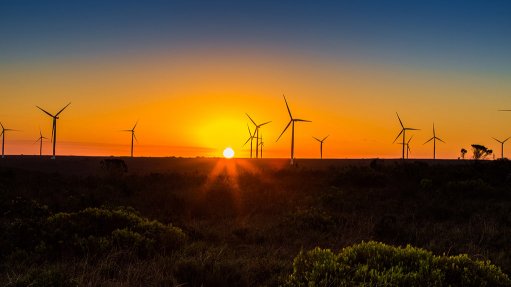
A theoretical analysis conducted by a leading global renewable-energy company indicates that electricity generated from a combination of South African wind and solar resources “closely follows” the country’s electricity demand profile and could, therefore, make a “baseload” power contribution.
Produced by Mainstream Renewable Power, the assessment is premised on wind and solar resource data measured in 2013 across 18 domestic sites, representing a combined theoretical generation capacity of 42 000 MW (30 000MW wind and 12 000 MW solar). The information was then compared with Eskom’s 2008 electricity demand data.
Mainstream CEO Dr Eddie O’Connor reports that the preliminary analysis shows that South Africa has a “comparative advantage” over most other countries as the electricity generated from the sites “follows the country’s summer, winter and peak day demand profiles”.
“This is significant because the wind blows and the sun shines when electricity is most needed, and this is not something that occurs with such regularity in other global markets.”
The significance could be amplified by the fact that there has been a material decline in wind and solar prices, following successive Renewable Energy Independent Power Producer Procurement Programme (REIPPPP) competitive bidding rounds.
Wind tariffs have fallen from 115c/kWh in round one to around 62c/kWh in round four, while solar photovoltaic prices have declined from 275c/kWh to 79c/kWh over the same period.
In total, 92 renewables projects, with a combined nameplate capacity of 5 243 MW, have been procured since the announcement of the first REIPPPP preferred bidders in late 2012 and the Department of Energy has reported that it is aiming to procure a further 1 800 MW under an “expedited” round before year-end.